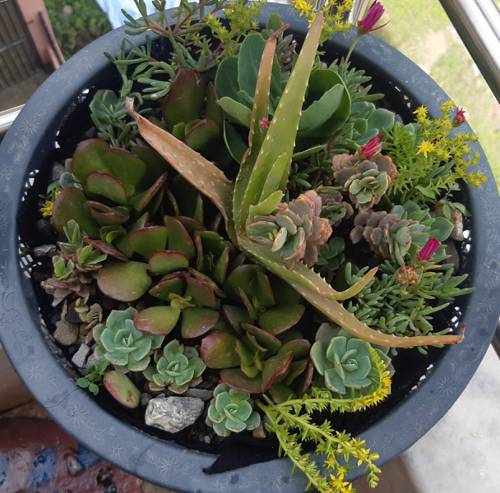
FAQ About Indoor Plant Humidity Regulation

What is the optimal humidity level for most indoor plants?
Most indoor plants thrive in humidity levels between 40% and 60%. This range replicates their natural environment and helps in efficient photosynthesis and growth.

How can I measure the humidity level in my home?
You can measure indoor humidity levels using a hygrometer, a device designed to measure the moisture content in the atmosphere. Digital hygrometers can provide quick and accurate readings and often come with additional features like temperature measurement.

Why is humidity important for indoor plants?
Humidity is crucial for indoor plants because it affects their ability to absorb water and nutrients through their leaves. Adequate humidity ensures that plants can transpire effectively, which is vital for proper growth and health.

How does low humidity affect indoor plants?
Low humidity can cause issues such as leaf browning, wilting, and stunted growth in indoor plants. It leads to increased water loss through transpiration, which may stress the plants as they struggle to retain necessary moisture.

What techniques can I use to increase humidity for indoor plants?
Increasing humidity can be achieved through various methods such as placing a water tray near plants, using a humidifier, grouping plants together, or misting them regularly. Each technique helps in raising the micro-level humidity around the plants.

Can using a humidifier help indoor plants?
Yes, using a humidifier is one of the most effective ways to maintain consistent humidity levels for indoor plants. Humidifiers add moisture to the air and can be adjusted to maintain the desired humidity range.

Are there specific plants that require higher humidity?
Certain plants, like ferns, orchids, and peace lilies, require higher humidity levels, often above 60%, to thrive. These plants naturally occur in tropical or subtropical environments where the humidity is considerably higher.

How can I reduce humidity if it's too high for my plants?
If humidity levels are too high, you can reduce them by increasing air circulation using fans, opening windows, or using a dehumidifier. Ensuring proper drainage in plant pots also prevents excess moisture buildup.

Does temperature affect indoor plant humidity needs?
Yes, temperature and humidity are interrelated factors in plant care. Higher temperatures can lead to increased evaporation, thus reducing humidity levels. Conversely, cooler temperatures can maintain higher humidity. Maintaining a balance is crucial for plant health.

Can misting my plants be enough to regulate humidity?
Misting can help increase humidity temporarily but usually isn't enough on its own to maintain consistent humidity levels throughout the day. It's often used as a supplementary method along with other strategies like using humidifiers or water trays.

What signs indicate that a plant is suffering from low humidity?
Signs of low humidity stress in plants include brown leaf tips, leaf curling, wilting, and premature leaf drop. The plant may also appear dull or stunted in growth.

How often should I check the humidity level for my indoor plants?
It's advisable to check the humidity levels at least once a week using a hygrometer. During seasonal changes, such as winter when heating can lower humidity, more frequent checks may be beneficial.

Will air conditioning affect indoor plant humidity levels?
Yes, air conditioners typically reduce indoor humidity levels by removing moisture from the air. This can lead to a drier atmosphere, necessitating the need for supplemental humidity control measures for plants.

Do indoor plant humidity needs vary with the seasons?
Indoor plant humidity needs can vary with the seasons. Generally, cooler months with central heating can significantly reduce humidity, while warmer spring and summer months can naturally raise humidity levels. Adjustments in plant care might be necessary accordingly.

Are there natural ways to increase humidity for plants without a humidifier?
Yes, natural methods to increase humidity include grouping plants together, placing water-filled trays near plants, and utilizing pebble trays with water. These methods enhance the microclimate, benefiting humidity-loving plants.

What types of hygrometers are best for monitoring plant humidity?
For home use, digital hygrometers are recommended for their accuracy and ease of reading. Some advanced models also offer remote monitoring or incorporate temperature readings, which can be helpful in fine-tuning your home environment for plants.

Is humidity more important for seedlings and young plants?
Humidity is especially crucial for seedlings and young plants since they have softer and thinner leaves that can easily dry out. Maintaining higher humidity levels helps them establish healthy growth and reduces stress.

Can using a pebble tray effectively increase plant humidity?
Yes, using a pebble tray can be an effective way to increase humidity. By placing a tray filled with water and topped with pebbles under a plant pot, you increase the humidity around the plant as the water evaporates. Ensure that the pot sits on the pebbles and not directly in the water to avoid root rot.

What role does transpiration play in humidity regulation for plants?
Transpiration is the process by which plants release water vapor into the air from their leaves. This process cools the plant and maintains moisture balance. Adequate humidity is necessary to facilitate transpiration, ensuring that plants can efficiently manage their water use and nutrient uptake.

How does central heating impact indoor plant humidity?
Central heating can significantly lower indoor humidity levels as it heats the air, causing moisture to evaporate. This can create a drier environment that stresses plants. To counteract this effect, consider using a humidifier or employing other humidity-boosting strategies.
